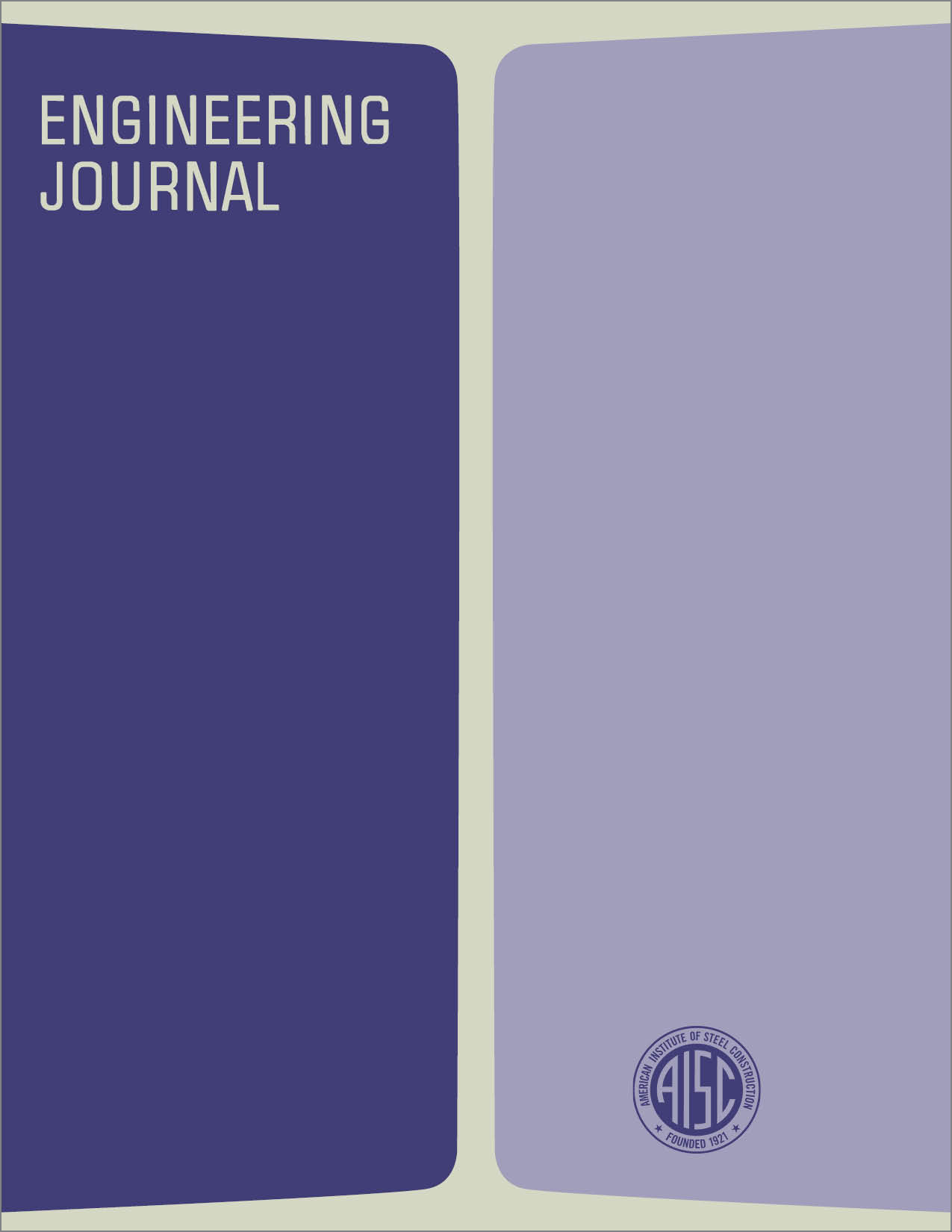Experimental Investigation of Lug Stresses and Failures
DOI:
https://doi.org/10.62913/engj.v11i2.1289Abstract
Connections and handling brackets, generally referred to as "lugs", have historically been designed with large end distances in order that pin failure result rather than failure of the lug material. The AISC Specification for the Design, Fabrication and Erection of Structural Steel for Buildings in referring to end distances provides minimum values to be used in design, but provides no insight as to allowable loads if a smaller end distance is desirable. Often, it is desirable to lift and handle components of mechanical equipment through the use of existing holes in the components. Many such cases do not meet the minimum edge distance requirements of the AISC Specification. Previous studies of lug stresses were generally limited in scope and provided no design formulation. The most practical approach was presented by Jongbloed-Unterhorst, predicting only the failure plane of the lug under pin load. Variables such as lug width and pin clearance were not treated.

